Discover 7 hidden attractions, cool sights, and unusual things to do in Washington (United States). Don't miss out on these must-see attractions: Daviess County Courthouse, Washington Commercial Historic District, and Robert C. Graham House. Also, be sure to include Dr. John A. Scudder House in your itinerary.
Below, you can find the list of the most amazing places you should visit in Washington (Indiana).
Table of Contents
Daviess County Courthouse
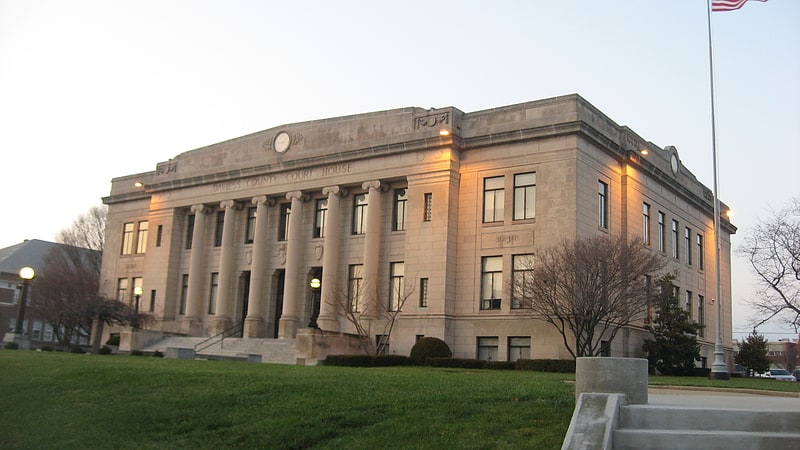
Daviess County Courthouse is a historic courthouse located at Washington, Daviess County, Indiana. It was built in 1927–1928 in the Classical Revival style. It is a two-story, rectangular brick building sheathed in Bedford limestone. It measures approximately 80 feet by 124 feet, and has a flat roof and slightly projecting colonnaded pavilions, one with six freestanding Ionic order columns. The original second floor courtroom was damaged by fire in 1985.
Also on the property are the contributing Confederate Monument in Owensboro on the southwest corner of the lawn (1900) and flagpole (1929).
It was added to the National Register of Historic Places in 2008.[1]
Address: 212 E Main St, Washington
Washington Commercial Historic District
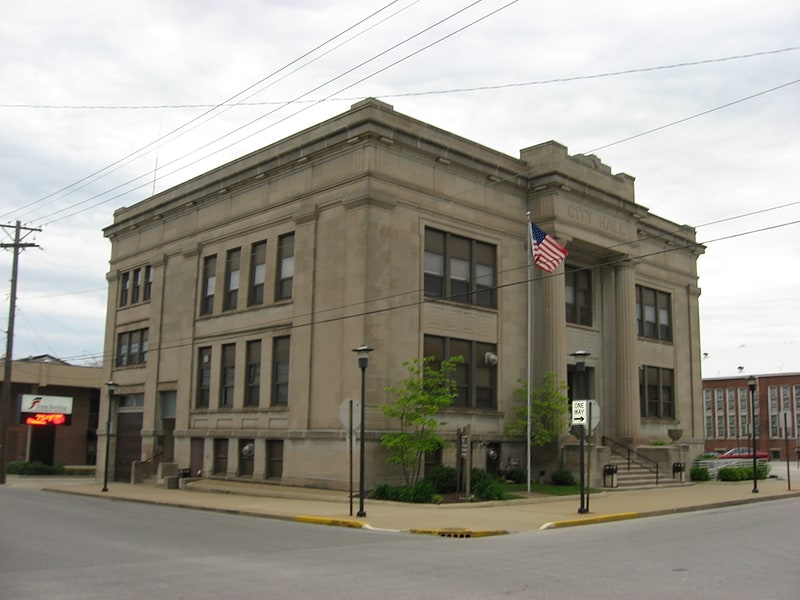
Historical place in Washington, Indiana. Washington Commercial Historic District is a national historic district located at Washington, Daviess County, Indiana. The district encompasses 88 contributing buildings and 1 contributing object in the central business district of Washington. The district developed between about 1815 and 1940, and includes notable examples of Italianate, Federal, and Classical Revival style architecture. Located in the district is the separately listed Daviess County Courthouse. Other notable buildings include the City Hall, Temple Court, Peoples National Bank, Masonic Building, Indiana Theater, American Steam Laundry Building, Baltimore and Ohio Passenger Depot, Westminster Presbyterian Church, and U.S. Post Office.
It was added to the National Register of Historic Places in 1990.[2]
Robert C. Graham House
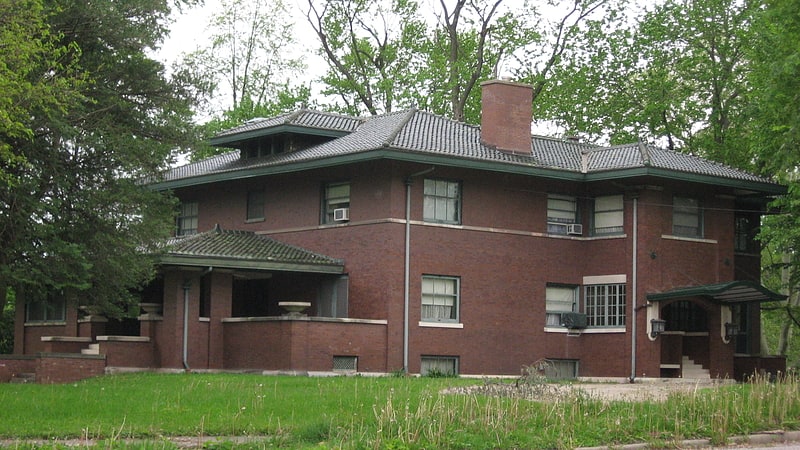
Robert C. Graham House, also known as Mimi's House and the Kelly-Graham House, is a historic home located at Washington, Daviess County, Indiana. It was built in 1912, and is a large two-story, Prairie School style glazed red brick dwelling. It has a low pitched hipped roof with wide overhanging eaves and covered with green Spanish tile. Its porches feature mosaic tile floors. From 1918 to 1967, it was the home of automobile manufacturer Robert C. Graham.
It was added to the National Register of Historic Places in 1983.[3]
Dr. John A. Scudder House
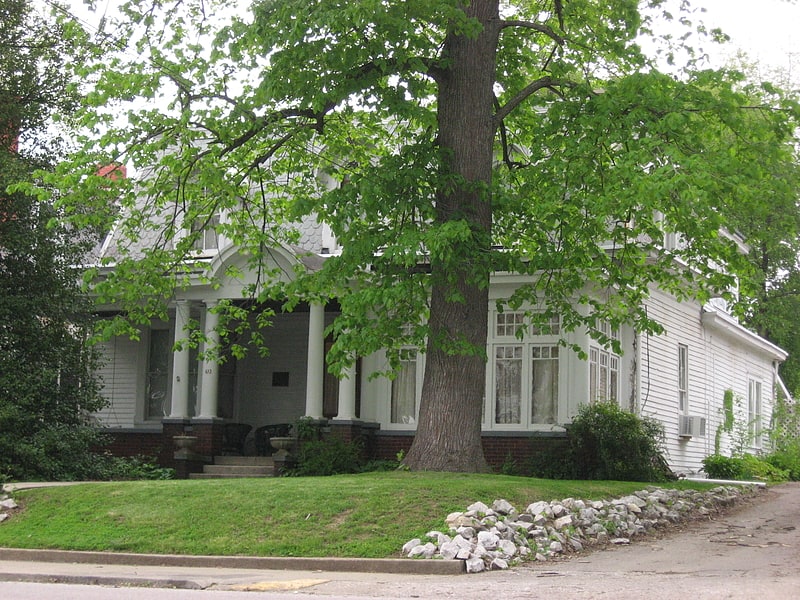
Dr. John A. Scudder House is a historic home located at Washington, Daviess County, Indiana. It was built about 1861, and is a one-story, Second Empire style frame dwelling with a slate mansard roof. It is sheathed in weatherboard and rests on a brick foundation. It was remodeled about 1922 to add a sunroom and porch.
It was added to the National Register of Historic Places in 1995.[4]
Magnus J. Carnahan House
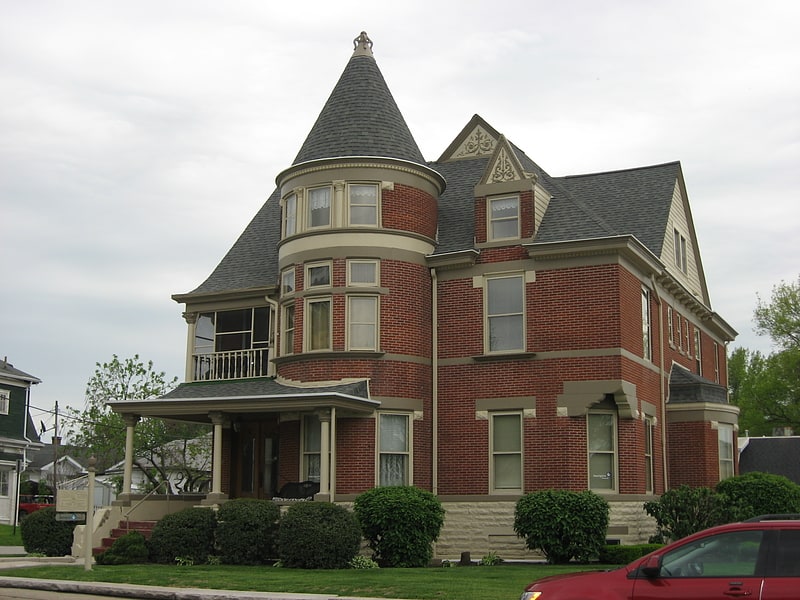
Magnus J. Carnahan House is a historic home located at Washington, Daviess County, Indiana. It was built between 1896 and 1902, and is a 2+1⁄2-story, Queen Anne style brick dwelling on a raised basement. It features a round corner tower with a conical roof, one-story porch and balcony, and complex hipped and gable roof. Also on the property is a contributing carriage house.
It was added to the National Register of Historic Places in 1991.[5]
Dr. Nelson Wilson House
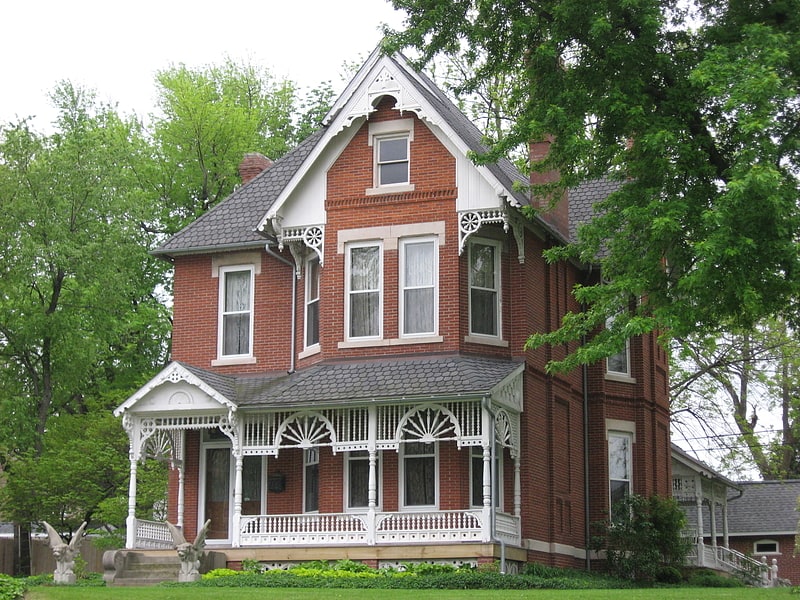
Historical place in Washington, Indiana. The Dr. Nelson Wilson House is a place on the National Register of Historic Places in Washington, Indiana. It was placed on the Register on June 26, 2008, due to its unique architecture, and for being the work of prominent local architect John W. Gaddis. The Daviess County Interim Report gave the house its highest rating: "Outstanding".
Nelson H. Wilson, born in Jefferson County, Indiana on November 12, 1844, married Matilda M. Campbell in 1889. From 1890 to 1895 he practiced dentistry is Washington, Indiana. In 1893 they had the house built. In 1895, Nelson Wilson died. Sometime between Wilson's death and 1900 the house went to William Beck, whose family would own the house until 2001. Matilda Wilson died on August 11, 1914.
The Dr. Nelson Wilson House is a two-story Queen Anne-style house, with a brick foundation, brick and limestone walls, and asphalt roof, built in 1893 by a John W. Gaddis, an architect from nearby Vincennes, Indiana who would later become known for building courthouses, such as those for Clay County, Huntington County, and Putnam County. Gaddis included elements of the Eastlake style in the house as well, as demonstrated by its "stickwork"; it is highly unusual, however, that the stickwork was not done with wood, as typical in Eastlake, but instead with brick.
Of particular note are the pattern on the side porches, which is Masonic Cross pattern. This Masonic Cross pattern could be seen as a Maltese Cross motif, save that both Nelson Wilson and John Gaddis were active Freemasons, and the thought of deviating from the Eastlake style to the Masonic Cross style in constructing the side porches is easily explained in one of the two deciding on the style.[6]
Thomas Faith House
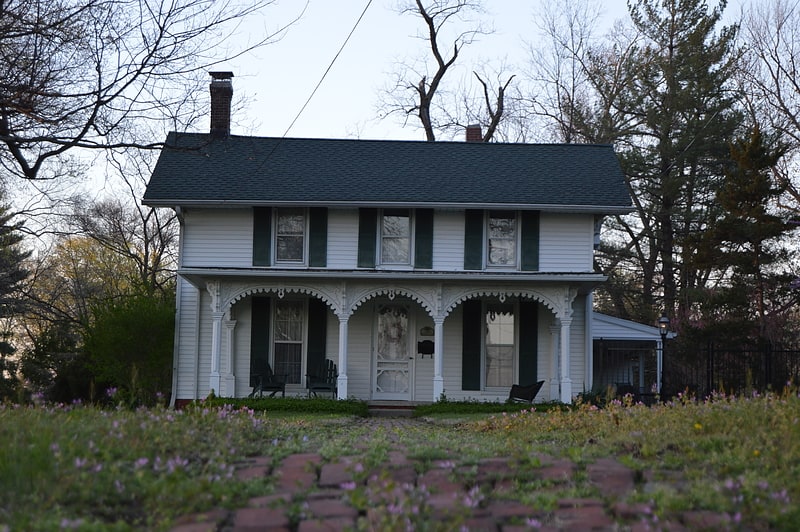
Thomas Faith House is a historic home located at Washington, Daviess County, Indiana. It was built in 1821, and is a 1+1⁄2-story, log, I-house. It has a 1+1⁄2-story, timber frame rear addition dating to the 19th century and attached two-car garage. It features a one-story front porch with an arched frieze and elaborate scrollwork.
It was added to the National Register of Historic Places in 1994.[7]